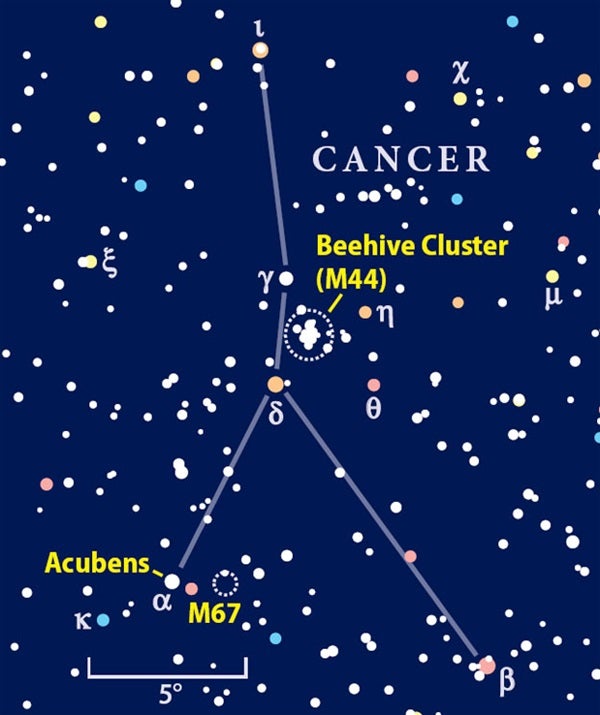This month’s binocular universe highlights the famous Beehive Cluster (M44) as well as a second, less famous open cluster, M67. In addition to those clusters and Saturn — which happens to pass through the constellation this month — Cancer includes the following sights visible through binoculars.
Iota Cancri is a challenging binary star for binoculars. A blue, magnitude 6.6 companion accompanies a yellowish magnitude 4.2 primary star. Located about 31″ (arcseconds) away, Iota is striking in giant binoculars and small telescopes.
R Cancri is a long-period variable star found about 3° north of Beta (b) Cancri. R varies between magnitudes 6.1 and 11.8 every 362 days. Right now, R Cancri is near minimum brightness, with the next maximum predicted for September.
X Cancri, a semi-regular variable star, looks red through slightly defocused binoculars and changes from magnitude 5.9 to 7.3 during an average of 165 days.
RT Cancri is another semi-regular variable star. It fluctuates between magnitudes 7.1 and 8.6 across a period ranging from 60 to 90 days.
RS Cancri, a third semi-regular variable star in Cancer, varies between magnitudes 5 and 7.4 roughly every 120 days.










